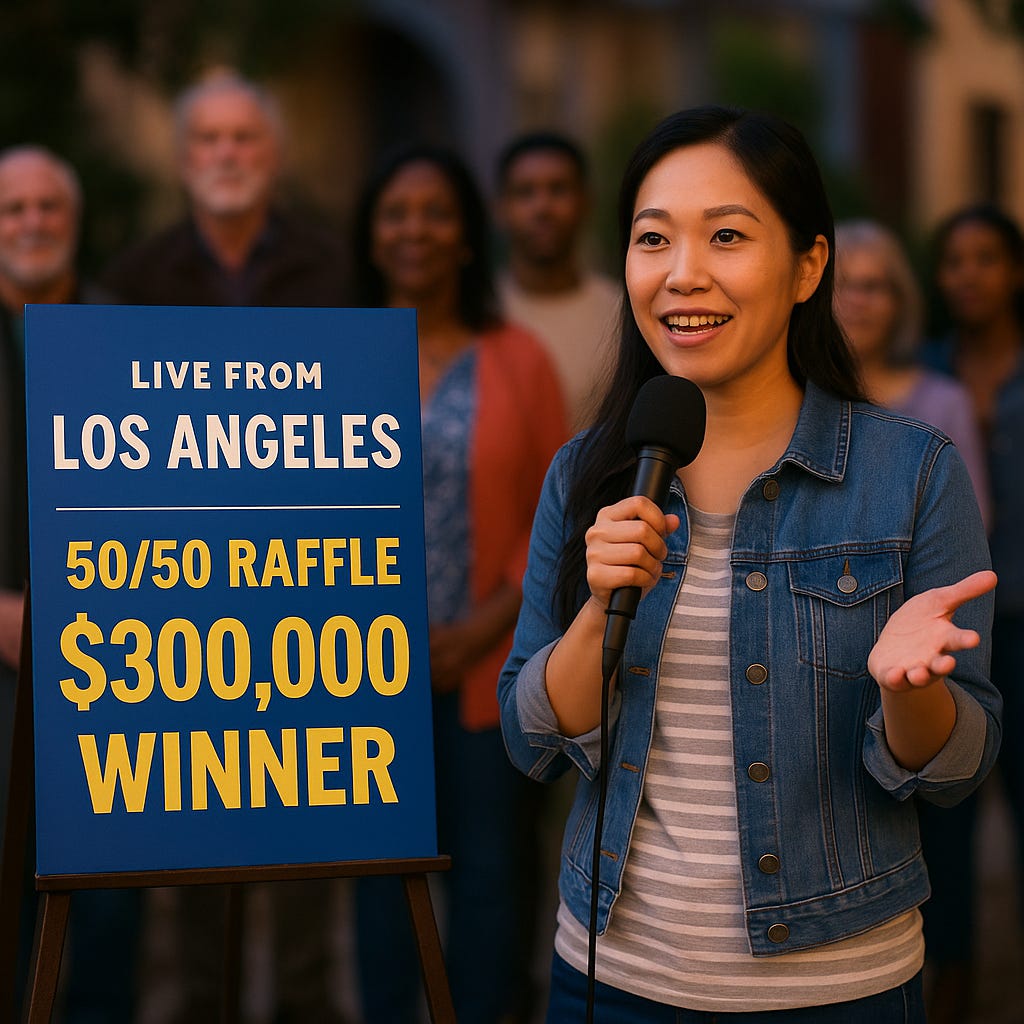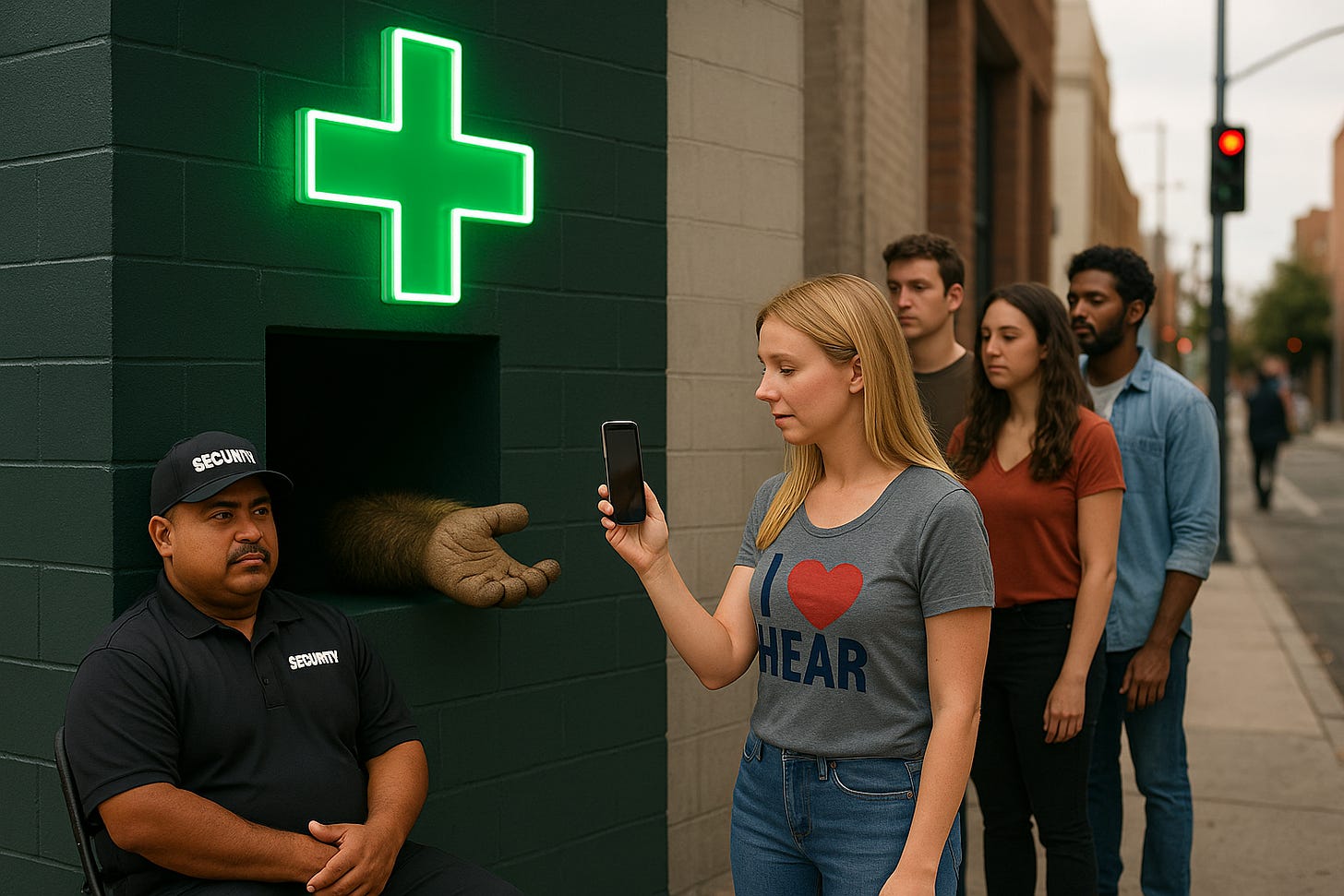Four More Ways to Raise That Billion for the City of LA
We've already figured out how to balance the city's budget, but hear are a few other ideas that include gambling, rock, and drugs
Facing a $1 billion budget shortfall, L.A.’s already-frazzled Mayor Karen Bass has warned of widespread cuts that could dramatically impact city services and staffing. More than 2,700 city positions are on the chopping block, including 1,647 actual layoffs and 1,053 vacant roles that will remain unfilled.
But have no fear — the LAPD will still be receiving millions of dollars in increases.
One of the departments facing cuts is Animal Services, which stands to lose 62 employees and 49 vacant positions — a 33% workforce reduction in a department already stretched thin.
Critical cuts to departments such as Sanitation (159 positions), Street Services (130 workers), Transportation (262 employees), and City Planning (114 planners) are also likely — significantly slowing down everything from waste collection to road maintenance to development approvals.
The cascading effect on day-to-day city life — from trash piling up to delayed construction permits — threatens to undercut the basic functions of municipal government, which is simultaneously trying to do two things: rebuild the Palisades and prepare for hosting the 2028 Olympics.
The clock is ticking, and this shortfall couldn’t have come at a worse time. That’s why we need drastic — but creative — measures, like the simple idea we introduced last month, plus these new kickass ways to get us out of the hole:
Daily 50/50 Raffles like at Dodger Stadium
The City should immediately enact daily 50/50 raffles, modeled after the successful version used by the Dodgers at home games, as a way to creatively and voluntarily generate public revenue.
These raffles are low-barrier, high-reward games of chance that encourage widespread participation — without raising taxes or cutting services. For just a small daily wager, Angelenos and tourists alike could buy in, knowing that half the pot goes straight to one lucky winner — and the other half keeps city workers from losing their jobs.
If just 3% of L.A.’s population — about 120,000 people — participated in the raffle each day at an average of $5 apiece, that would generate $600,000 daily. Half of that, $300,000, would go to a lucky winner, and the remaining $300,000 would go directly to the city.
Over the course of a year, that could bring in nearly $110 million in voluntary public revenue — while stoking the excitement of Angelenos and tourists every damn day.
Every night at 7 p.m., the winner would be announced live on the City’s YouTube account from one of L.A.’s 450+ neighborhoods.
Hosted by a local celebrity, artist, activist, or beloved neighborhood figure, the livestream would include a short intro about their corner of the city before revealing that day’s big winner.
It would be a little like our humble podcast — but with a big-ass suitcase of cash. This alone could conservatively take a 10% bite out of that billion, while putting over $100 million into the hands of everyday Angelenos.
Sell City Weed ya Cowards
Los Angeles is a titan in the legal weed game, with over $300 million in annual cannabis sales citywide — and yet none of that bud is grown under a City of L.A. label.
For a place that practically invented stoner cool, this is a glaring missed opportunity. The city should get into the game not just as a regulator, but as a cultivator or brand partner. By growing its own cannabis on city-owned land and/or teaming up with struggling farms, L.A. could quickly launch an official weed brand that would be a hit with tourists flocking to city-owned mini dispensaries offering a limited array of sativa, indica, and hybrid eighths, ounces, and joints.
Branded L.A. bud could sell at an affordable $30 an eighth or $125 an ounce. Beyond profitability, it could be deeply symbolic: a city that once jailed its residents for possession now selling responsibly grown herb to reinvest in those same communities.
Fifty “Kusk Korners” would provide the city with easy-to-purchase buds. You use the app to place your order. You make your purchase and hand over your phone to the scary paw jutting out from a mysterious black hole. The security guard makes sure you don’t get robbed walking back to your car. Everyone wins.
And the strain names? The streets will come up with the best ones. Start in the Valley with Pacoima Purple — a deep, couch-locking indica that hits as hard as a hot August day. Add Sherman Oaks Skunk, a hybrid so smooth you’ll achieve resting “aw yeah” face. Or go old-school with Van Nuys Vanilla Kush, mellow and nostalgic like a ‘90s mall food court.
If each Korner sold just 4.38 ounces per day, that would be 80,000 ounces a year — or $10 million in sales. Do it right, and each corner could double or triple that. Keep prices low and the quality just above shitty. The only way it falls apart is if City Weed turns into Shitty Weed.
The Night of Rock
If there’s one thing LA has plenty of, it’s big ass music venues and people who want to rock out. Just like that extremely fun babe who sometimes says yes, it seems like everyone just needs an excuse to say fuck it.
One night, everyone should go out and see live music at one of our many huge venues. Small ones can join in too. Consider the rest of them icing on the cake.
If you count just the biggest ones: SoFi Stadium (70,240), Los Angeles Memorial Coliseum (93,607), Rose Bowl (96,771), Dodger Stadium (57,000), Staples Center (20,000), BMO Stadium (22,000), Kia Forum (17,500), Hollywood Bowl (17,376), Shrine Auditorium (6,300), and YouTube Theater (6,000) there are ten major Los Angeles concert venues with a combined total capacity of 406,794.
Invite the biggest acts in the world to just stoke L.A. for a night. Raves at SoFi and the Rose Bowl, Dead & Company with King Gizzard at the Coliseum, Kendrick at Dodger Stadium, Billie Eilish at Crypto, Olivia Rodrigo at BMO, RHCP and Fishbone at the Forum, Chappell Roan at the Bowl, Doechii at the Shrine, and Adam Sandler at YouTube.
Charge people $40 for tickets and $25 for 3 drinks, and you have $26 million. On this one night, everyone in the industry works for free — for the good of the city. Would they do it? THEY GET TO SEE ONE OF THOSE SHOWS FOR $65! Jeez.
Do it twice a year — the start and end of summer — and you’ve got $50 million.
City Water, in a Bottle
People buy water. They would absolutely buy LA-branded tap water for a dollar.
If the city sold $1 bottles in vending machines throughout and in front of every city-owned building, the cash would flow. Joke all you want, but L.A. water is regularly tested and held to strict purity standards.
Double down on that narrative by selling it — in sturdy, recyclable bottles, preferably ones already recycled.
If each vending machine — installed at libraries, garages, and city facilities — sold just 50 bottles a day at $1, that’s $50 daily per location. Multiply by 1,000 machines, and the city generates $50,000 per day, or about $18 million annually.
Make sense? Who knows. At one point, no one thought people would ever buy water. Now millions do it every day, including children — often paying more than $2 a bottle. Meanwhile, cities like L.A. provide clean, delicious water that gets flushed, washed, and overlooked. Rebranding and bottling it elevates perception and monetizes an existing resource. Selling it back at $1 is absurd — so are $25 Erewhon smoothies.
Public schools alone could be a cash cow. With over 1,000 LAUSD schools and about 430,000 students, placing vending machines in each cafeteria — targeting just one bottle per student per week — would move over 22 million bottles annually. That’s $22 million right there.
Outrageous? Absolutely. But making $40 million a year on water would also completely pay for the $26.94 million budget of Animal Services.
These ideas could fetch a quarter billion a year and provide a few jobs like that security guard next to the giant hand at the Weed Korner.
You’re welcome.














